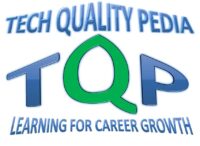Total Productive Maintenance in Lean Manufacturing is a culture that focuses on maximizing the Overall Equipment Effectiveness-OEE by involving all employees from top management to front-line workers with the aim of keeping all machines in full working conditions throughout life.
There are eight principles in the Total Productive Maintenance System implementation program.
Table of Contents
TPM Principles | TPM Process
The Eight Principles in the TPM Implementation process are:
- “Kobetsu-Kaizen” for realizing high production efficiency- Eliminating 16 Major losses.
- Establishment of the “Jishu-Hozen” system ( Autonomous Maintenance).
- Establishment of a planned maintenance system.
- Skill training program for operators and maintenance team.
- Early Equipment Management-establishment of initial phase management system for products and equipment.
- Establishment of a “Quality Maintenance” system.
- As TPM in office, establish an efficiency achievement system.
- Establish a system for safety/health and a good working environment.

KOBETSU – KAIZEN (Focused Improvement)
Activities include:
- Recognition of 16 Major Losses.
- Overall Equipment Efficiency, material, die, jig, and energy requirements per product unit calculation, and setting the target for the above.
- Thorough pursuit of ‘what the equipment and production must be.
Concerned persons or group: Staff, Line Leader
JISHU-HOZEN (Autonomous Maintenance)
Activities include:
- Initial clean-up.
- Countermeasures for the causes of dirty equipment and improving access to hard-to-clean areas.
- Tentative maintenance standards.
- General inspection.
- Autonomous inspection.
- All-out autonomous management.
Concerned persons or group: Operator, Line Leader
PLANNED MAINTENANCE
Activities include:
- Daily maintenance.
- Time-based maintenance.
- Predictive maintenance.
- Improvement in increasing the service life expectancy.
- Control of replacement parts.
- Failure analysis and prevention of recurrence.
- Lubrication control.
Concerned persons or group:
Staff members, leaders, and persons of the maintenance department.
TRAINING AND EDUCATION
Skill development training program for operators and maintenance persons.
Activities include:
- Basic maintenance steps.
- Tightening the bolts and nuts.
- Key mating operation.
- Bearing maintenance.
- Maintenance of transmission gears.
- Leakage prevention operation.
- Maintenance of hydraulic and pneumatic pressure equipment.
- Maintenance of electrical control systems.
Concerned persons or group: Operator, Maintenance persons
EARLY EQUIPMENT MANAGEMENT
Establishment of initial phase management system for product and equipment( shorten the trial period for a new product, Realize minimum run-up time, and stable launching of new products and equipment operation.
Activities include:
-Set forth development and design targets.
Things to be reflected in Maintenance Prevention design :
- Easy to manufacture
- Easy quality assurance
- Easy to use
- Maintainability
- Reliability
- Completion of design preparation
- Prototype: Point out the areas that need further adjustment and attention during a trial run and initial stages
- Review the design.
Concerned persons or group: R&D dept., Production engineering dept., Maintenance dept.
QUALITY MAINTENANCE
Establishment of a “Quality Maintenance system” ( Realize the “zero-defect” through observing the required equipment maintenance).
Activities include:
1. Confirm the standard for product quality characteristics.
2. Recognize the defect symptom and actual defect record.
3. Assure product quality.
4. Investigate the production process, material and energy utilization, and equipment condition.
5. Investigation, analysis, and Kaizen of minor defects and abnormalities.
Concerned persons or group: Quality and Production dept., assurance staff, Line leader or in-charge.
ADMINISTRATION AND OFFICE TPM
TPM in office, establish efficiency achievement system (Realizing “zero functional loss”, organize high-efficiency offices, render service and support functions to the production department).
Activities include:
“Jishu-Hozen” activities
-Initial clean up (in the production operation area).
-Making the operation efficient.
-Standardization.
-All-out management by objectives.
-Shorten the account settlement period.
-Improvement in logistics.
-Make the purchasing procedures simple.
-Innovation of production control systems.
Concerned persons or group: Leader and members of sales and administrative department.
SAFETY, HEALTH, AND ENVIRONMENT
Establish a system for safety/health and a good working environment.
(Keep a ‘zero-accident’ level. Create a healthy and clean workplace).
Activities include:
-Safety measures to protect the operators from equipment accidents.
-Make the operation safe.
-Improve the working environment (noise, vibration, and dust).
-Measures to achieve environmental protection.
-Pay attention to the health of employees.
-Promotion of a cheerful working environment.
Concerned persons or group: Manager Health and Safety, Staff for Safety, Health, and working environment management.

